International Journal of Aquaculture and Fishery Sciences
Market profile and performance analysis of cultured fish actors
Ololade Rachel A1,2*, Olagunju Funke I2, Adeojo John R2 and Adejumo Taiwo J3
2Department of Agricultural Economics, Ladoke University of Technology, Ogbomoso, Nigeria
3Department of Statistics, Ladoke University of Technology, Ogbomoso, Nigeria
Cite this as
Ololade Rachel A, Olagunju Funke I, Adeojo John R, Adejumo Taiwo J (2023) Market profile and performance analysis of cultured fish actors. Int J Aquac Fish Sci 9(3): 012-021. DOI: 10.17352/2455-8400.000087Copyright License
© 2023 Ololade Rachel A, et al. This is an open-access article distributed under the terms of the Creative Commons Attribution License, which permits unrestricted use, distribution, and reproduction in any medium, provided the original author and source are credited.Cultured fish marketing is highly entrepreneurial. It is a highly perishable commodity that deteriorates very rapidly, rendering it unfit for human consumption if kept for a long time without processing. This study aims to examine the performance of cultured fish actors (producers, processors, wholesalers, and retailers involved in the selling of fish), identify the factors influencing their performance, and identify constraints of the cultured fish market in the study area. Primary data on socioeconomic and resource characteristics were collected with the use of a structured questionnaire administered to 300 respondents using a multistage random sampling technique among cultured fish actors in South-Western Nigeria. The data were analyzed using descriptive statistics for the market profile of the actors, Market Margin (MM) estimations for the performance of actors, and multiple regression for factors affecting the performance of actors. The analyses showed that 81.70%, 37.93%, 51.47%, and 27.03% of the producers, processors, wholesalers, and retailers respectively were males. The analysis of the performance of actors showed that the Gross Profit Margin (GPM) for the producers, processors, wholesalers, and retailers are 75.26%, 16.21%, 7.63%, and 0.9%, respectively. The multiple regression results showed that the significant factors affecting the performance of actors were transport cost (p = 0.000), labour cost (p = 0.001), cost of fish purchased (p = 0.073), cost of fish sold (p = 0.000), the quantity of fish sold (p = 0.000) and access to credit (p = 0.085). Inadequate funds/capital, poor electricity, lack of good roads, and a market for the produce are the major constraints of cultured fish marketing in the study area. Conclusively, the GPM showed that the actors were all making a profit but at different rates because the cost incurred by each actor differs.
Introduction
Agripreneurship is the technical skills and business activities that deeply involve idea generation, opportunity evaluation, planning, processing, and marketing of agricultural products which adds value, creates synergy in the production process, import-export of farm products, and distribution of products through different market channels, involving wholesaler, retailers, consumers and processing industries [1].
Cultured fishes are known to grow rapidly and, therefore can be easily practiced alongside any type of farming. Investing in a fish farming business will result in huge patronage and a source of cash flow. Cultured fish farming in the study area is profitable despite the high cost of running the farm and other production constraints [2,3]. Cultured fish contributes significantly to the country’s food security, employment, and foreign exchange earnings and it’s also growing much faster than capture fisheries [4-6]. Cultured fish farm does not cause any environmental hazard. Unlike poultry farming, you can set up a fish farm anywhere, including residential areas. Fish farming represents a major market opportunity for smallholder farmers in Nigeria. Locally cultured fish have great promise to bridge the gap between supply and demand for fish and fish products [7]. Likewise, improving food security and creating more jobs [8,9].
Cultured fish are sold both locally and internationally, depending on the species available. The local cultured fish market is influenced typically by market price, species, consumer awareness, and ease of accessibility. The primary processors developed the marketing system for aquaculture products in Nigeria [10]. Fish farming is a huge business in Nigeria, but smallholder farmers face several obstacles. In Nigeria, suitable water resources and high market demand mean that aquaculture presents a profitable opportunity for smallholder farmers to expand their farming activities. Yet few farmers take advantage of this opportunity because they lack the technical knowledge fish farming requires and because there are few hatcheries that supply fish to small-scale farmers. The market opportunity for fish farming in Nigeria is huge. Nigerians consume nearly 2 million tons of fish per year, and the country’s growing population ensures demand will continue to boom. Demand far outweighs current national production, making it necessary to import fish from all over the world [11,12]. However, in recent years the price of imported fish has increased significantly because of the devaluation of the Nigerian naira. Even though fish is a key ingredient in many Nigerian dishes and an important and efficiently produced source of protein (for every kilogram of fish feed, a kilogram of fish is produced), only half the fish consumed by Nigerians is sourced locally. Lack of financing is one of the largest obstacles small-scale farmers face, especially women who rarely have the financial history needed to qualify for loans [9,13]. There are a lot of discouragements for farmers, especially livestock farmers in going into production and marketing, due to the present high in price of things generally and the cost of living.
In view of this challenge, there is a dire need to investigate the market profile of cultured fish actors, that is, the producers of cultured fish and the marketers (processors, wholesalers, and retailers) that serve as intermediaries between the producers and the consumers, performance (this is how profitable the fish actors are in their cultured fish business) of the actors, factors influencing the performance of the actors and constraints of the market. These are investigated in order to understand the market chain of cultured fish so as to encourage livestock farmers to participate in the market, enhance their standard of living, and contribute to the economy at large.
Research questions
- What are the market profiles of cultured fish actors
- What are the performances of the actors
- What are the factors influencing the performance of the actors
- What are the constraints of the cultured fish market.
The general objectives of the study are to:
- Analyze the market profile of cultured fish actors.
- Examine the performance of cultured fish actors
- Identify the factors influencing the performance of the actors
- Identify the constraints of the cultured fish market in the study area.
Hypothesis of the study
H0: There is no significant relationship between the market profile and the performance of the cultured fish actors in the study area.
H1: There is a significant relationship between the market profile and the performance of the cultured fish actors in the study area.
Methodology
Study area
This study was carried out in three states in southwestern Nigeria (Figure 1). The states were grouped into three, Lagos and Ogun, Oyo and Osun, and Ondo and Ekiti, the grouping was based on their similarities, therefore Ogun, Osun, and Ekiti State were purposively selected. The selection of Ogun State instead of Lagos State was because Lagos State has a high number of artisan fish farmers as it is a coastal region. However, the majority of fish farmers in Ogun State are into cultured fish farming because of less access to the coast. The selection of Ekiti instead of Ondo State was based on the information obtained from the Agricultural Development Project (ADP) on the number of registered cultured fish farmers and marketers in the states. The Osun State was selected instead of Oyo State based on the information gathered from the Ministry of Agriculture which was streamlined to the ADP in conjunction with the catfish association. Osun State has a higher number of livestock farmers who are involved in cultured fish production compared to that of Oyo State. Actors were registered under the catfish association in conjunction with the ADP.
Sampling procedure
A multi-stage random sampling procedure was used to select 300 marketers in the study area. Simple random sampling was used to select two ADP (Agricultural Development Programme) zones from each state (Aramoko and Ikere from Ekiti State, Abeokuta and Ijebu-ode from Ogun State, and Iwo and Osogbo from Osun State. Based on the number of registered farmers and marketers with the ADP. Stratified random sampling was used to select 111 respondents from Ekiti (26 farmers, 25 wholesalers, 28 retailers, and 32 processors), 98 respondents from Ogun State (24 farmers, 20 wholesalers, 25 retailers, and 29 processors), and 91 respondents from Osun State (21 farmers, 23 wholesalers, 21 retailers, and 26 processors).
Sources of data
Primary data were collected from the respondents with the aid of a questionnaire and oral interview. Some sets of data were collected; a few of them are as follows;
- Demographic characteristics of household head in terms of sex, secondary occupation, age, years of education, family size, years of marketing experience, etc.
- Resource characteristics include secondary occupations, access to extension services, access to credit, ownership of transport facilities, and access to cooperatives etc.
- Financial transaction which includes producers’ price, consumers’ price, total operating expenses, etc.
Analytical technique
Descriptive statistics, as well as inferential statistics and econometric analysis, were used to analyse the data collected from cultured fish farmers and marketers.
Objective one examined the market profile of each actor involved in the market chain. This was achieved with the use of descriptive statistics.
Objective two analysed the performances of actors in the chain. This was achieved with the use of estimation of market margins and profit margins.
Objective three analyses factors affecting the performance of actors. This was achieved with the use of multiple regression analysis.
Objective four identified the constraints of cultured fish marketing in the study area. This was achieved with the use of descriptive statistics.
Analysis of the performance of actors in the market chain
Estimates of the marketing margins were used to analyse the performance of the market in the study area. Marketing margin was calculated by taking the difference between producers and retail prices. The producers’ share is the commonly employed ratio calculated mathematically as, the ratio of producers’ price to consumers’ price (This was calculated for each of the actors). Mathematically, producers’ share can be expressed as:
Where: PS= Producer’s share
Pp = Producer’s price
Cp = Consumer price
MM = marketing margin
The above equation tells us that a higher marketing margin diminishes producers’ share and vice versa. It also provides an indication of welfare distribution among production and marketing agents. Calculating the total marketing margin was done by using the following formula. Computing the Total Gross Marketing Margin (TGMM) is always related to the final price paid by the end buyer and is expressed as a percentage [14,15].
Where, TGMM=Total gross marketing margin.
Net Marketing Margin (NMM) is the percentage of the final price earned by the intermediary as his net income once his marketing costs are deducted. The equation tells us that a higher marketing margin diminishes the producer’s share and vice-versa. It also provides an indication of welfare distribution among production and marketing agents.
Where; Gmm = Gross market magin
Mc = Market cost
From this measure, it is possible to see the allocative efficiency of markets. Higher NMM or profit of the marketing intermediaries reflects reduced downward and unfair income distribution, which depresses the market participation of smallholders. An efficient marketing system is one where the net margin is near to reasonable profit. To find the benefit share of each actor the same concept was applied with some adjustments. In analyzing margins, first, the Total Gross Marketing Margin (TGMM) was calculated. This is the difference between the producer’s price and the consumer’s price (price paid by the final consumer) i.e.
TGMM = Consumer’s price – Producer’s price
Then, the marketing margin at a given stage ‘i’ (GMMi) was computed as:
Where SPi is the selling price at the ith link and PPi is the purchase price at the ith link. The total gross profit margin is also computed as:
Where TGPM is the total gross profit margin, TGMM is the total gross marketing margin and TOE is the total operating expense.
A similar concept of profit margin that deducts operating expense from marketing margin was done by Dawit [16] and Marshal [17].
Then profit margin at stage “i” is given as:
Where, GPMi =Gross profit margin at ith link
GMMi =Gross marketing margin at ith link
OEi =Operating expense at ith link
TGPM=Total gross profit margin
Dependent variables
Performance of each actor: Marketing margin was used to analyze the performance of each actor. It was represented as PS for the producer’s share (or share of each actor), PP for the producer’s price (or price of each actor), CP for the consumer’s price, and MM for market margins.
Performance of actors: Multiple regression analysis was used to analyze the factors affecting performance of actors. Where, Y= Performance of actors, X1= Sex, X2= Age, X3= Years of education, X4= Family size, X5= Market experience, X6= Transport cost, X7= Labour cost, X8= Purchase price, X9=Selling price, X10= Quantity sold, X11= Market distance, X12= Credit access, X13= Market information, and X14= Cooperative membership.
Results and Discussions
Marketing profile of each actor in the market chain
Gender of each actor: According to Table 1, the majority(81.70%) of the producers were males while 18.31% were females. 37.93% of the processors were males while 62.07% were females. 51.47% of the wholesalers were males while 48.53% were females. 27.03% of the retailers were males while 72.97% were females. The result of this study supported the assertion that most of the fish marketers are female, while fisheries activities are mostly dominated by men [18-20]. This shows that men are more involved in fish production, while women are into post-cropping operations like marketing, pond management activities, fish processing, value-adding, post-production processes, and processing into consumable products, this is in line with the studies carried out by [21,22].
Age of the Actors: A higher percentage of the producers and marketers have their age between 36-45 (Table 2), for producers, it was 24%, processors 43%, wholesalers 26%, and retailers 36%. This implies that processors have the highest percentage of respondents to be in this age range. The work of fish processing is labour intensive and it needs a very active individual to carry out the activities it entails [23]. The result of the study further implies that the majority of the actors were in their middle age which is an important factor in marketing activities. This age bracket is known to be active, innovative, energetic motivated individuals who can cope with challenges and rigors that may emanate from fish marketing activities [24]. This also agreed with the finding of Ebewore [25] who observed that those involved in economic activities like fish marketers are at their economically active age and were able to actively participate in the business. Therefore, the result of this study portends a great future for fish marketing in the study area.
Quantity of fish available for sale
According to Figure 2, a higher percentage (67.61) of the producers have 1000-10000kg of fish for sale. 94.25% of processors, 80.88% of wholesalers, and 100% of the retailers have less than 1000kg of fish for sale. The producers are expected to have large quantities of fish for sale because the marketing process begins with the producers [26,27]. The processors could not have too large a quantity because the work of processing is highly demanding in the aspect of energy, cost, and market for the processed fish. A proper feasibility study has to be carried out before they determine the quantity they are to process per period of time. The wholesalers are very important in cultured fish marketing, their activities and advantages cannot be over-emphasized. These are the ones who buy in bulk from the producers, without them the producers will have problems with the marketing of their products [28]. They buy to sell to processors, retailers, and consumers. They also study the market to know the quantity they will be able to sell per period of time to avoid loss. The retailers buy in lower quantities compared to the wholesalers, they make fish readily and easily available for the consumers, where the wholesalers cannot reach they are able to get there. They buy in smaller quantities compared to the wholesalers. They also study the market based on their past experiences to know the quantity they are to purchase for sale per period of time.
Price determinant by each actor
A higher percentage (56.34%) of the producers determined the price of their produce using the prevailing market price (Figure 3). 74.71%, 58.82%, and 67.57% of processors, wholesalers, and retailers respectively determine the price of their produce by considering their cost of purchase. 11.27% of the producers determined the price of their produce through bargaining and negotiation while 32.40% determined theirs by taking their cost of purchase into consideration. 1.15% of the processors determined the price of their produce through bargaining and negotiation while 24.14% determined theirs by considering the prevailing market price. 2.94% of the wholesalers determined the price of their produce through bargaining and negotiation while 38.25% determined theirs by considering the prevailing market price. 2.70% of the retailers determined the price of their produce through bargaining and negotiation while 29.73% determined theirs by considering the prevailing market price.
Distance to market (Km)
This is the distance of the cultured fish marketers from the nearest market and it was measured in kilometres. The closer the market, the lesser would be the transportation charges, reduced walking time, and reduced other marketing costs, better access to market information and facilities. The majority (39.44%) of the producers have their distance to market to be >20km while a majority (40.23%, 29.41%, 37.84%) of the processors, wholesalers, and retailers respectively have theirs to be between 5-10km (Table 3). This implies that the majority of the producers did not move their produce to the market, they sell on their farms, while the processors, wholesalers, and retailers buy from the producers and move to the marketplace to sell their produce. A similar issue was reported by Ayelech [29] on the fruit market in Gomaworeda identified that poor market access has a significant and negative effect on the quantity of avocado and mango supplied.
Percentage loss of each actor
According to Table 4, the majority (49.3%) of the producers have a percentage loss to be < 5%, 39.44% of the producers have a percentage loss to be (5% - 10%), 9.86% of the producers have a percentage loss to be (11% - 15%), while 1.41% have the percentage loss to be > 15%. 100% of the processors have their percentage loss < 5% while both wholesalers and retailers recorded no loss. This explains that the higher the percentage loss, the lower the profit, and vice versa. All the actors must find a way of reducing the percentage loss on their fish business in order to increase their business performance.
Type of labour of each actor
A majority (46.48%) of the producers used hired type of labour (Figure 4). This explains that the work of fish farming is labour-intensive and needs extra labour for the effectiveness and profitability of the enterprise. The production is always in large quantity which makes it require extra labour for effectiveness [23]. A higher percentage of the processors (55.17%), wholesalers (48.53%), and retailers (82.43%) by themselves handled the labour required for the marketing of their products. This they do by trying to minimize cost and maximize their profit. Employing labour is an extra cost to them therefore if they are able to personally engage themselves in the labour required for the marketing; they will have more income at hand at the end of the marketing activities.
Source of market information of each actor
This is the means by which each actor gets the information required for the marketing of their produce. 77.47%, 29.89%, 39.71%, and 32.43% of the producers, processors, wholesalers, and retailers respectively get their market information from fish farmers (Figure 5). 1.14%, 62.07%, 0.5%, and 63.51% of the producers, processors, wholesalers, and retailers respectively get their market information from their co-marketers. 8.45%, 4.60%, 8.82%, and 4.05% of the producers, processors, wholesalers, and retailers respectively get their market information from government extension workers. While 12.68%, 3.45%, and 1.47% of the producers, processors, wholesalers, and retailers respectively get their market information from market officials. This variation in sources of market information gives room for variations in prices, acceptability, and customers. This can also serve as an opportunity to develop marketing strategies for the business.
Method of preservation by each actor
This is the means by which the marketers preserve their produce if they are unable to sell all at the expected time. A majority (33.80%) of the producers returned their fish to the pond as a means of preservation, if they were unable to sell all at a go (Figure 6). This will cost them more feed and labour to elongate the life of the fish and make it acceptable to the buyers whenever there is a market for it, though it is an additional cost to the producer. 30.99% of the producers smoked their fish to preserve it, while the majority (50.58%, 35.29%, 52.70%) of the processors, wholesalers, and retailers respectively smoked their fish to preserve it in case there is left over. Smoking for preservation helps to add value and increase acceptability by the consumers but it incurs extra cost and sometimes if not acceptable by consumers, the marketer can run at a loss. 12.68%, 9.20%, 26.47%, and 6.76% of producers, processors, wholesalers, and retailers respectively refrigerate their fish to preserve them. The majority of the consumers prefer pond fish fresh or smoked, therefore few of the actors refrigerate to preserve their fish so as to minimize loss on their market. 4.23%, 14.94%, 13.24%, and 13.51% of the producers, processors, wholesalers, and retailers respectively fry their fish to preserve them in case of leftover. This is also done to add to the taste of the fish instead of giving room for spoilage, it also helps the actors not to incur total loss on their fish.
Performance of actors in the market chain
Figure 7 shows that all the actors in the fish market chain were making a profit but not at the same rate because the cost incurred by each actor differs. Producers are making the highest profit followed by the processors, wholesalers, and then the retailers. It is very difficult to compare the profit of producers with the marketers for the reason because producers obtain this profit for all their efforts in production and marketing practices while processors, wholesalers, and retailers would obtain this much profit even within a few days. However, the result indicated that the fish market chain performed well in the study area. The marketing margins calculated for each marketing actor show that there are differences in the consumers’ price spread along the marketing chain. A larger marketing margin indicates a high price to consumers and a low price to producers and it is an indicator of the existence of imperfect markets [30-32] contrary to this is the result shown in Figure 6; the producer had the highest market margin which showed that producers made the highest profit. The profit made by producers is based on the ability to increase their production as they grow over the years in the business, the ability to put together the experience gathered over the years, and the ability to embark on the proper management practices for pond fish production. Other actors were able to make good profits based on diligence on their part and their ability to have more fish to market at a time. They can also improve their business if they are able to do proper study on how to increase the quantity available for sale per sale period. In any business, diligence is needed on the part of the marketer to have a good business performance. Figure 7 shows the details of the performance of the actors in the chain; total producer’s price (TPP), total selling price (TSP), total operating expenses (TOE), producer share (PS), total gross market margin (TGMM), gross market margin (GMM), total gross profit margin (TGPM), gross profit margin (GPM).
Factors affecting the performance of the cultured fish actors
Table 5 presents the multiple regression results of the factors affecting the performance of the cultured fish actors. A total of 14 variables were tested in the model, of which 6 were statistically significant at different levels. The R-squared of the regression model is estimated at 0.7144, this implies that 71.44% of the variation in the gross profit margin of the actors is explained by the independent variables. The F-statistic value of 98.48 with a p-value of 0.0000 indicates the statistical significance of the model as a whole. The double log functional form was chosen to be the lead equation with a higher number of significant variables and larger explanatory power (R-squared).
The coefficient of transportation cost was negative and statistically significant at a 1% level of statistical significance. This implies that the gross profit margin is negatively affected by transportation costs. The coefficient estimate of 0.5847 indicates that when transportation cost increases by one unit while holding other variables constant, the gross profit margin decreases by 0.5847%. This is in line with the study carried out by Olagunju 2022 [33], on the impact of rural transportation networks on the income of local farmers in Ilaje local government area in Ondo State. The study revealed that farmers’ poor nature of transportation networks has a negative impact on their income.
Also, the regression result shows that labour cost was negative and significant at a 1% level of significance. This gives the implication that the gross profit margin is negatively affected by the cost of labour. The estimated coefficient value of 0.1013 indicates that an increase in the cost of labour by one unit will result in a 0.1013% decline in the gross profit margin while holding all other variables constant. This explains that the more there is an increase in the cost of labour used, it will result in a decrease performance of the cultured fish profit. In addition, Okello, 2019 [34] reported that the use of hired labour had a significant effect on allocative efficiency.
Furthermore, the coefficient of cost of fish purchased (purchase price/cost) was negative and significant at a 10% level of statistical significance. This gives the implication that the gross profit margin is negatively influenced by the purchase price. The regression coefficient estimate of 0.1271 implies that increasing the purchase price by one unit, while holding all other variables constant, will result in a 0.1271% decrease in the gross profit margin. This shows that as the purchased price of cultured fish by marketers increases, the selling price to the consumers will also increase. The customers may decide to go for an alternate product like meat, if the cost is too high. This result is contrary to the findings of Lindawati, 2020 [35], that the increase in input and output price did not have an impact on production costs and household expenditures on Rice Livestock Integrated Farming System (RLIFS)
Meeting a priori expectation, the coefficient of cost of fish sold (selling price) was positive and significant at a 1% level of significance. This reveals that gross profit margin is positively affected by the selling price. The estimated coefficient value of 4.2394 indicates that an increase in the selling price by one unit will result in an increase in the gross profit margin by 4.2394% while holding all other variables constant. Marketers may have the privilege to sell their fish at a good price peradventure there is good negotiation with their customers. This is contrary to the findings of Bassey, et al. [36] which identified fish buying prices as one of the factors that impacted negatively and significantly on traders’ profit in Akwa-Ibom, Nigeria.
The regression result revealed that the coefficient of the quantity of fish sold was positive and significant at a 1% level of statistical significance. This indicates that the quantity sold affects gross margin positively. The coefficient value of 1.8058 implies that increasing the quantity of fish sold by one unit will give rise to an increase in the gross profit margin by 1.8058% while holding all other variables constants.
Lastly, the coefficient of access to credit significantly affects gross profit margin at a 10% level of significance and is negative. The estimated coefficient of 0.3091 implies that access to credit will result in a 0.3091% decrease in gross profit margin, while other variables are held constant. This could be a result of cultured fish marketers not having access to the credit on time, which will not eventually meet their needs because the credit was disbursed at the wrong time. The study was contrary to the findings of Ehiakpor, et al. [37], which estimated a positive effect of access to agricultural credit on the farm income [38-41].
Cultured fish market constraints
Table 5 shows that higher percentages (80.67% and 70.33%) of the marketers acknowledge inadequate funds/capital and poor electricity as constraints, while about 60% and 52.67% realized a lack of good roads and market for the produce respectively as constraints. Others are in the following other, high transport cost 31.67%, lack of correct market information 22%, high labour cost 21%, and availability of fish to market 20%. It is clearly seen that inadequate funds/capital, poor electricity for preservation, lack of good roads, and market for the produce have above 50%. High transport costs, lack of correct market information, high labour costs, and availability of fish to market has below 50%. This implies that the first four constraints were seen as the major constraints while the last four were seen as the minor constraints in cultured fish marketing in South-West Nigeria (Figure 8).
*- Multiple response
Due to the result of the Multiple Regression estimates of factors affecting the performance of cultured fish actors showed a significant relationship between some characteristics of the market profile (transport cost, labour cost, purchase price, selling price, quantity sold, and credit access) and the performance of the cultured fish actors, the null hypothesis (H0) was rejected and the alternate hypothesis (H1) was accepted.
Conclusion
The study showed that men are more involved in fish production, while women are into post-cropping operations like marketing and fish processing (value-adding, post-production processes, and processing into consumable products). The result of the study further implies that the majority of the actors were in their middle age (36-45 years) which is an important factor in marketing activities. This age bracket is known to be active, innovative, and energetic motivated individuals who can cope with challenges and rigors that may emanate from fish marketing activities. The majority of the actors determined the price of their produce by considering their cost of purchase, only the higher percentage of the producers determined the price of their produce using prevailing market price. The price determinant by the actors was based on individual opinion or decision. The majority of the producers do not move their produce to the market, they sell on their farms, while the processors, wholesalers, and retailers buy from the producers and move to the marketplace to sell their produce. A higher percentage of all the actors got their market information from fish farmers. The highest market margin was made by the producers showed they made the highest profit. The profit made was based on the ability to increase their production as they grow over the years in the business, the ability to put together the experience gathered over the years, and the ability to embark on the proper management practices for cultured fish production. Other actors were able to make good profits based on diligence on their part and their ability to have more fish to market at a time. Based on the above findings, there should be an effective and stronger linkage between the cultured fish actors and agricultural extension programs. In this case, the extension agents should endeavor to organize farmer’s Clubs with the assistance of national research institutes (Research institutions and Universities). Also, the Nigerian government and international organizations should pay special attention to basic infrastructure such as good roads for market access and electricity for proper storage, in order to enhance the maximum profitability of the cultured fish business in the study area.
- Ololade RA, Adejumo TJ. Gender Assessment of Nigerian Youths’ Perceptions and Attitudes towards Home Economics-Based Entrepreneurship, Journal of Entrepreneurship and Organization Management. 2021; 10(9): 1-6.
- Edet EO, Udoe PO, Uwah ED. Costs and Return Analysis Of Fish Farming In Calabar Metropolis, Cross River State Nigeria, Global Journal Of Agricultural Sciences. 2018; 17: 23-31.
- Namonje-Kapembwa T, Samboko P. Is aquaculture production by small-scale farmers profitable in Zambia? InternationalJournal of Fisheries and Aquaculture. 2020; 12(1): 6-20.
- Shava E, Gunhidzirai C. Fish farming as an innovative strategy for promoting food security in drought risk regions of Zimbabwe. Jamba. 2017 Nov 28;9(1):491. doi: 10.4102/jamba.v9i1.491. PMID: 29955350; PMCID: PMC6014019.
- Moreau MA, Garaway CJ. Trading Fast and Slow: Fish Marketing Networks Provide Flexible Livelihood Opportunities on an East African Floodplain. Front. Sustain. Food Syst. 2021; 5: 1-10.
- Irwin S, Flaherty MS, Carolsfeld J. The contribution of small-scale, privately owned tropical aquaculture to food security and dietary diversity in Bolivia. Food Sec. 2021; 13: 199–218.
- Awuor FJ, Obiero K, Munguti J, Oginga JO, Kyule D, Opiyo MA, Oduor-Odote P, Yongo E, Owiti H, Ochiewo J. Market Linkages and Distribution Channels of Cultured, Captured and Imported Fish in Kenya, Aquaculture Studies. 2019; 19(1): 57-67.
- Marchant-Forde JN, Boyle LA. COVID-19 Effects on Livestock Production: A One Welfare Issue. Front Vet Sci. 2020 Sep 30;7:585787. doi: 10.3389/fvets.2020.585787. Erratum in: Front Vet Sci. 2020 Nov 19;7:625372. PMID: 33195613; PMCID: PMC7554581.
- Adeleke B, Robertson-Andersson D, Moodley G, Taylor S. Aquaculture in Africa: A Comparative Review of Egypt, Nigeria, and Uganda Vis-À-Vis South Africa, Reviews in Fisheries Science and Aquaculture. 2021; 29:2; 167-197. DOI: 10.1080/23308249.2020.1795615
- Deng GT. Assessment of Factors Affecting Fish Production and Marketing in Gambella Region, Ethiopia. ScientificWorldJournal. 2020 Jun 16;2020:5260693. doi: 10.1155/2020/5260693. PMID: 32607080; PMCID: PMC7315307.
- Matemilola S, Elegbede I. The Challenges of Food Security in Nigeria.Open Access Library Journal. 2017; 4: 1-22.
- Oluwatayo IB, Adedeji TA. Comparative analysis of technical efficiency of catfish farms using different technologies in Lagos State, Nigeria: a Data Envelopment Analysis (DEA) approach. Agric& Food Secur. 2019; 8: 8.https://doi.org/10.1186/s40066-019-0252-2
- Udo IU, Umanah SI. Current Status of the Nigerian Aqua Feeds Industry: A Review, International Journal of Innovative Studies in Aquatic Biology and Fisheries (IJISABF). 2017; 3(1): 14-22.
- Mendoza G. A Primer on marketing channels and margins. Lyme Rimer Publishers Inc., USA. 1995; 425.
- Gebre E, Workiye A, Haile K, Tarekegn K. Structure conduct and performance of Sesame market in Guraferda and MeinitGoldia District Southwest Ethiopia, British Journal of Marketing Studies. 2021; 9:(1); 11-29.
- Dawit G. Market chain analysis of poultry: The case of Alamata and Atsbi-Wonbertaworedas of Tigray Region. M.Sc thesis submitted to the School of Graduate Studies, Haramaya University. 2010; 80.
- Marshal N. Value chain analysis of sugarcane: The case of Kalu district, South Wollo zone of Amhara National Regional state, Ethiopia. M.Sc thesis submitted to the School of Graduate Studies, Haramaya University. 2011; 83.
- Brummett BH, Babyak MA, Williams RB, Barefoot JC, Costa PT, Siegler IC. NEO personality domains and gender predict levels and trends in body mass index over 14 years during midlife, Journal of Research in Personality. 2006; 40 (3): 222-236.
- Hino J. Uncharted Waters: Kenya Takes Dramatic Leap In Aquaculture. Corvallis: Global Aquaculture Advocate. 2011.
- Ashley-Dejo SS, Olaoye OJ, Fakoye EO, Ikeweinwe NB, Idowu AI, Bolarinwa KK, Adelaja OA. Limitations to the Adoption of Recommended Aquaculture Production Technologies by Small Scale Fish Farmers in Oyo State Nigeria, Global Journal of Science Frontier Research Agriculture and Veterinary. 2013; 13(9): 29-37.
- Nwabeze GO, Ifejika PI, Tafida AA, Ayanda JO, Erie AP, Belonwu NE. Gender and Fisheries of Lake Kainji, Nigeria: A Review, Journal of Fisheries and Aquatic Sciences. 2013; 8: 9-13.
- Afodu OJ, Akinboye OE, Chioma GO, Ndubuisi-Ogbonna LC, Shobo B, Ayo-Bello TA, Ajayi OA. Profit Analysis of Fish Farming Enterprises in Ikenne Local Government Area of Ogun State, Nigeria, Asian Journal of Agricultural Extension, Economics and Sociology. 2017; 18(1): 1-8.
- Iruo FA, Onyeneke RU, Eze CC, Uwadoka C, Igberi CO. Economics of Smallholder Fish Farming to Poverty Alleviation in the Niger Delta Region of Nigeria, Turkish Journal of Fisheries and Aquatic Sciences. 2018; 19(4): 313-329.
- Njoku ME, Offor EI. Cost And Returns Analysis Of Catfish Marketing In Aba South Local Government Area Of Abia State, Nigeria, Agro-Science Journal of Tropical Agriculture, Food, Environment and Extension. 2016; 15(2): 9-14.
- Ebewore SO. Assessment of the Marketing of Frozen Fish (Iced Fish) in Edo State, Nigeria Asian Journal of Business Management. 2013;5(4): 353-357.
- Ozigbo E, Anyadike C, Adegbite O, Kolawole P. Review of Aquaculture Production and Management in Nigeria, American Journal of Experimental Agriculture. 2014; 4(10): 1137-1151.
- Ayanboye AO, Oluwafemi ZO, Rafiu RA. Fresh fish (Clariasgariepinus) marketing system in major towns of Ibarapa zone, Oyo State, Nigeria. International Journal of Applied Agricultural and Apicultural Research,(IJAAAR). 2015; 11 : 162-171.
- El-Sayed AM, Dickson MW, El-Naggar G. Value chain analysis of the aquaculture feed sector in Egypt, Aquaculture. 2015; 437: 92-101.
- Ayelech T. Market chain analysis of fruits for Gommaworeda, Jimma zone, Oromia National Regional State.M.Sc thesis presented to School of Graduate Studies, Haramaya University. 2011; 110.
- Lusk JL, Tonsor GT, Schulz LL. Beef and Pork Marketing Margins and Price Spreads during COVID-19. Appl Econ Perspect Policy. 2021 Mar;43(1):4-23. doi: 10.1002/aepp.13101. Epub 2020 Oct 8. PMID: 33042511; PMCID: PMC7537190.
- Bimbo F, Bonanno A, Viscecchia R. Geographical indications' prices and marketing margins: the role of group size, longevity, and production decisions. British Food Journal. 2023; 125(1): 286-301. https://doi.org/10.1108/BFJ-09-2021-1000
- Weber IM, Wasner E. Sellers’ inflation, profits and conflict: why can large firms hike prices in an emergency? Review of Keynesian Economics. 2023; 11(2): 183–213.
- Olagunju O. Impact of Rural Transportation Networks on Farmers’ Income in Ilaje Local Government Area of Ondo State, Nigeria. Agricultura Tropica ET Subtropica. 2022; 55: 9-18.
- Okello DM, Bonabana-Wabbi J, Mugonola B. Farm level allocative efficiency of rice production in Gulu and Amuru districts, Northern Uganda. Agric Econ. 2019; 7: 19. https://doi.org/10.1186/s40100-019-0140-x
- Lindawati L, Kusnadi N, Kuntjoro SU, Swastika DKS. The Impact of Input and Output Prices on the Household Economic Behavior of Rice- Livestock Integrated Farming System (Rlifs) and Non-Rlifs Farmers. Earth and Environmental Science. 2020; 122 (2018): 012020.
- Bassey NE. Uwemedimo EO, Uwem UI, Edet NE. Analysis of the determinants of fresh fish.
- Ehiakpor DS, Adzawla W, Danso-Abbeam G. Effect of Access to Agriculture Credit on Farm Income in the Talensi District Of Northern Ghana. 2016; 7(55): 40-46.
- Ololade RA, Olagunju FI, Adejumo TJ, Okegbade AI. Econometric Analysis of Accessibility and Repayment Ability of Agricultural Credit among Rural Root and Tuber Crops Farmers in Oyo State Nigeria, Global Journal of Management and Business Research (B) Economic and Commerce. 2018; 18(5): 17-29.
- Ololade RA, Olagunju FI. Determinants of Access to Credit among Rural Farmers in Oyo State, Nigeria. Global Journal of Science Frontier Research (D) Agriculture and Veterinary. 2013; 13(2): 17-22.
- Khanal S, Khatri S, Khanal S. Production, marketing, and future prospects of fish farming in Nepal: National and global scenario, Cogent Food & Agriculture. 2020; 6:1; 1860384. DOI: 10.1080/23311932.2020.1860384.
- Akwa Ibom State. British Journal of Economics, Management and Trade. 2015; 5(1):35-45.

Article Alerts
Subscribe to our articles alerts and stay tuned.
 This work is licensed under a Creative Commons Attribution 4.0 International License.
This work is licensed under a Creative Commons Attribution 4.0 International License.
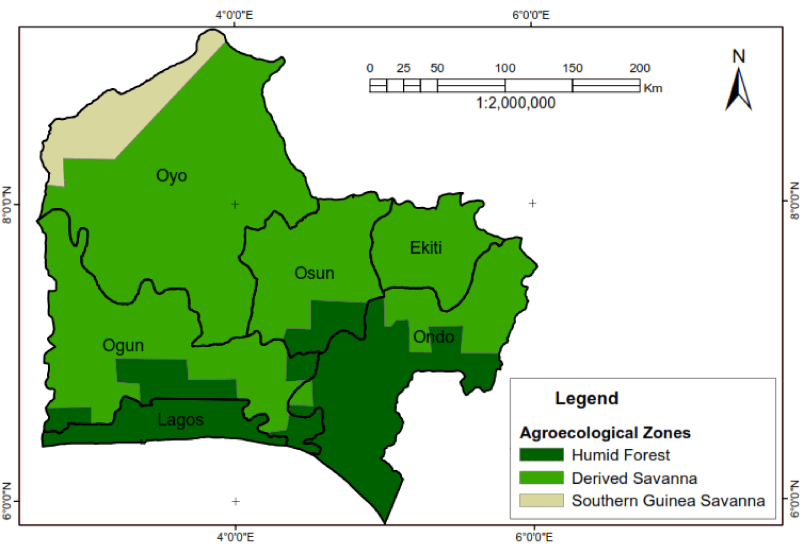
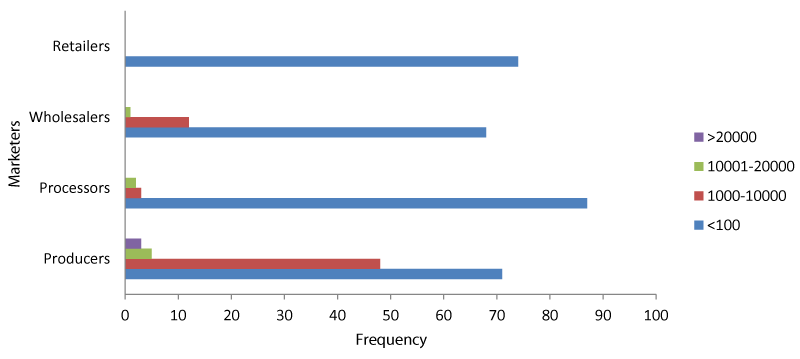
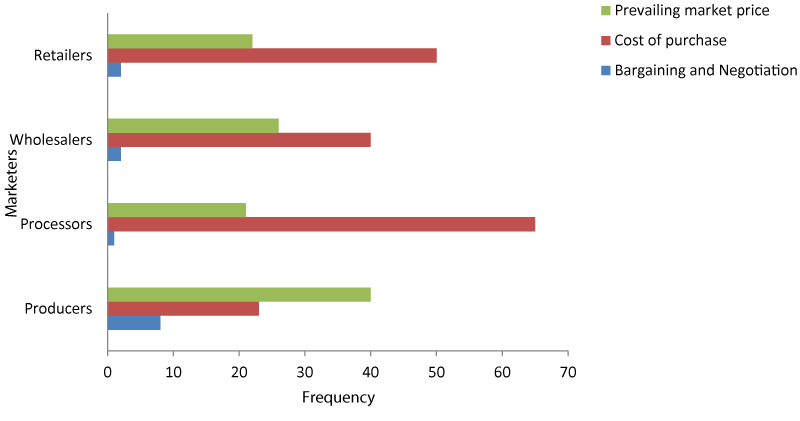
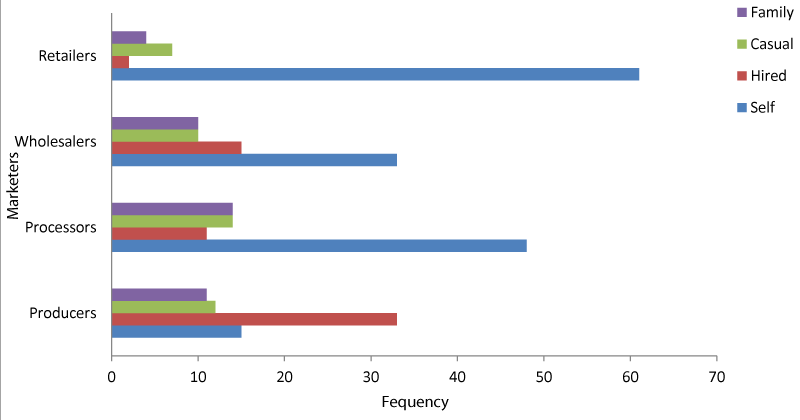
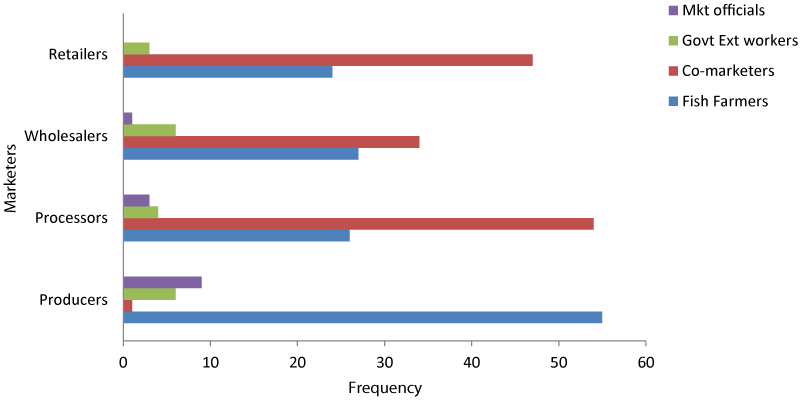
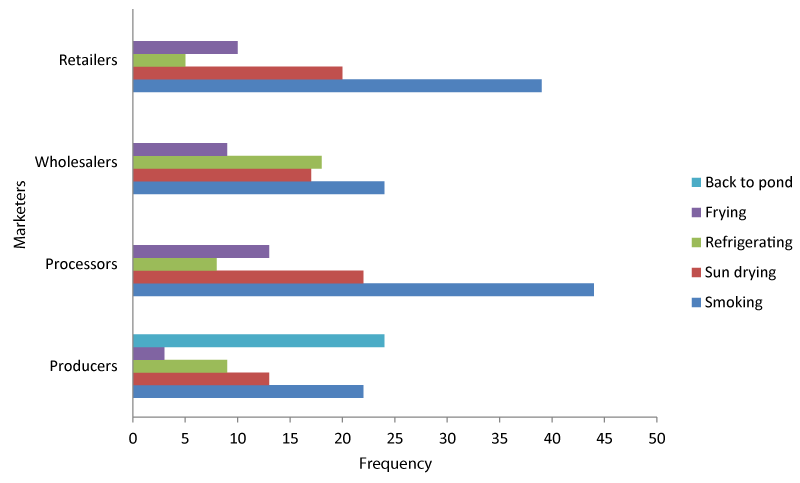
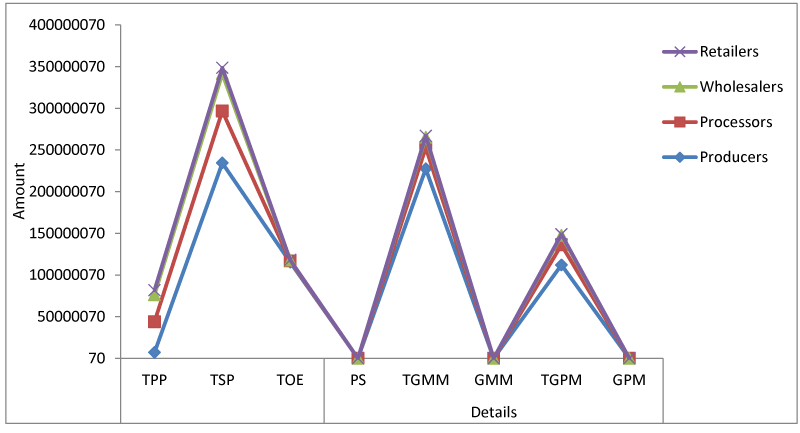
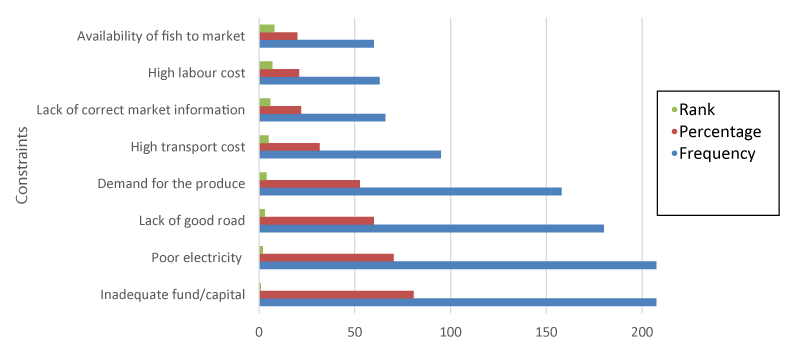

 Save to Mendeley
Save to Mendeley
